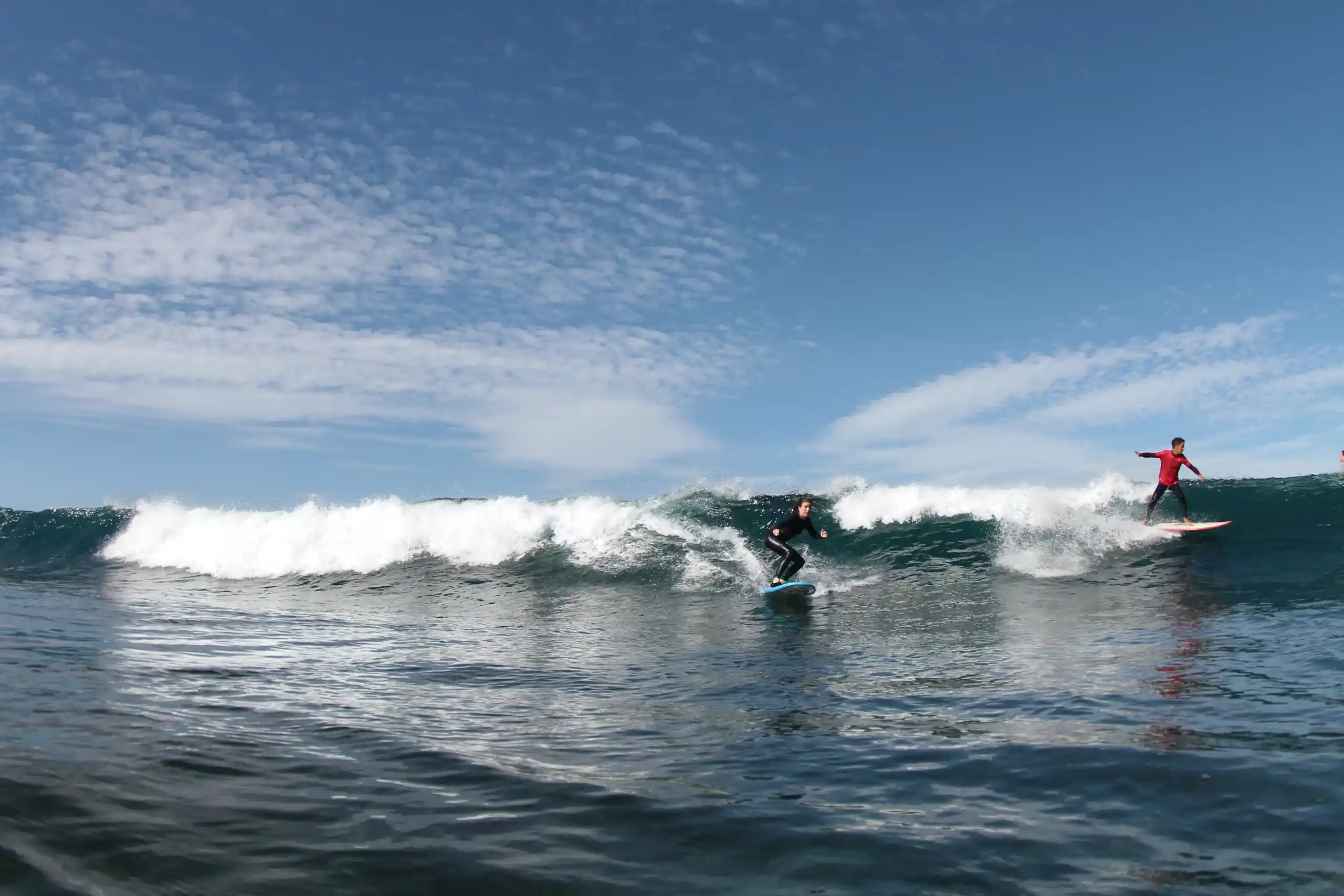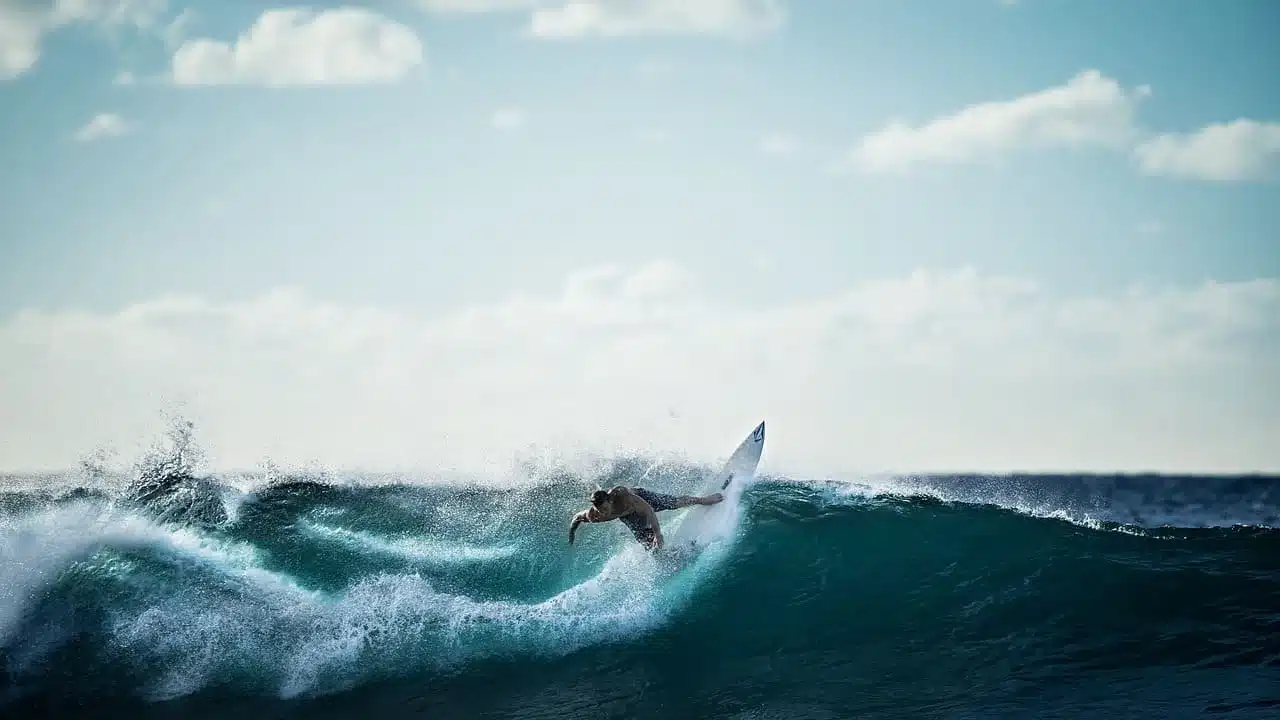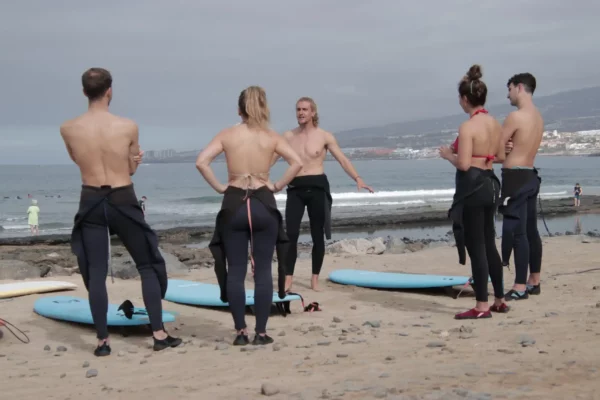Indice

How to Know What is your Level of Surfing: The Definitive Guide to Understand your Progression
Do you Remember the first time you climbed on a table? That mixture of fear, excitement and salt water everywhere. Since that time, a question begins to haunt the head of all the that will be hooked to this sport: what is my level of surfing? And it is not a matter of ego, but one of the most important questions you can ask yourself to make progress in a safe and fun manner.
Know where you are in your journey as a surfer it is key to choose the right waves, the appropriate table, and, above all, to know what you need to focus for further improvement. It’s not about getting a label, but have a clear map of your evolution.
In this article, we will break down each level, from the first day of the foams to dance in the wall of a green wave. We want you, when you finish reading, you know exactly at what point are you and what are your next steps. We’re going to do this!
To Know your Level of Surfing: A Self-Honest
Before immersing ourselves in the tags of “beginner” or “advanced”, it is essential that you are honest with yourself. The ocean knows no appearances. In order to assess your level of surfing in a realistic way, take a look at these three pillars:
- Rowing and Set up (Take Off): How efficient is your rowing? Do you get to stand in a fluid way and at the right time? A beginner struggle to get up in the foam, while a surfer advanced paddle with power to position itself at the peak.
- Control and Readout of the Sea: Once on foot, what happens? Are you going in a straight line towards the shore or you are able to direct you to the table? Do you understand where you are going to break the wave? The ability to read the sea and around the wall of the wave is the leap of quality.
- Maneuvers and Confidence: Do You just “survive” the wave, or you start to “dance” with it? Maneuvers such as the bottom turn (the turn at the base of the wave) or the cutback (back to the foam to make the difference between an intermediate and one advanced. Your confidence in waves of different size and strength is also a key indicator.
With these three points in mind, let’s look at each of the phases of the surfer.
Beginner level: The Beginning of the Adventure,
All, without exception, we have been here. Is the phase of discovery, the humility and the first big smiles. Patience is your best ally.
Absolute beginner (Level 0 or Initiation)
Here is the source of the magic. You are an absolute beginner if you identify with this:
- Your playing field is the foam. The waves have already broken and you take advantage of that energy white for your first slip.
- You move lying on the table. The main goal is to feel how the table is slid over the water and find the balance.
- You start trying to take off. Practice the gesture to stand in the sand and then you try it in the foam, probably with more falls than successes. And nothing happens!
- You’re not sure of the safety rules and priorities in the water.
Phase is a precious and essential. Force the machine here is an error. Enjoy every small victory. Feel that first push of the foam is something that is not forgotten never.
Beginner Intermediate (Level 1)
You’ve exceeded the initial phase and already you are starting to feel a little more comfortable. Know that you are a beginner, intermediate when:
- you have Mastered the take off in the foams. Because it is not a lottery; you stand in most foams that remas.
- You control the table in a straight line. You are able to maintain balance and direction until the foam loses strength.
- Your stroke is more aware. You start to paddle most effective way to catch the foam, while still costing you leave the area of impact.
This is a crucial point. A solid base here is all for your future in the surf. Many people are frustrated trying to move to the next stage too quickly, when the smart thing to do is to consolidate the balance and the paddling. For that, you have a right guidance is key, and many are in good surf school tenerife, where the conditions are usually perfect to reinforce these first steps with security.
Intermediate level: From Survivor to Surfer

This is, possibly, the longest phase and rewarding. Here you cease to be a mere “survivor” in the water to become, in truth, in a surfer. It is the time to face the green waves (I still have not broken).
Intermediate Core
for The great leap. You’re in the transition of the security of the foam to the thrill of the open sea.
- You feel more comfortable paddling. Since you’re not afraid to both the impact zone and you’re able to get it to the “line-up” (the area where the surfers waiting for the waves).
- You begin to read the sea. Identify the series, you understand where the waves break (left or right) and you start to position yourself.
- You grab your first green waves small. Remas waves that have not yet been broken, but will probably go down in a straight line, feeling for the first time the wall of the wave.
Intermediate
Here is where the real surfing begins. Not only low the wave, but as you start to walk through it.
- Running the wall of the wave. You are able to turn the table after the take off to surf in parallel to the riverbank, taking advantage of the energy of waves between 30 and 60 cm (up to the waist or the chest).
- Make the bottom turn. You have learned the maneuver more important to the surf: the rotation at the base of the wave. This allows you to proyectarte by the wall and begin to generate speed.
- You have a greater control over the table. Your balance is solid and you start feeling how to use the edges of the table to direct it.
Upper intermediate
‘re a step to the next level. You feel confident and in control in the water.
- Surfeas with confidence waves of 60 to 90 cm (up to the shoulder). You read well the sea, and select the wave you want to surf.
- Dominate the bottom turn and you start to make cutbacks. Not only ahead of the wave, but that you’re able to do a cutback, a wide turn to go back to the foam (the party with the highest energy of the wave) and continue surfing.
- Start to generate your own speed. By using the flexion and extension of your body, you get up to speed on the wall of the wave.
Advanced level: Dance with the Ocean

At this level, the surf becomes a form of expression. You have a deep knowledge of the sea and a refined technique that allows you to flow with the waves.
Advanced
The majority of surfers aspire to reach this level and stay here.
- Surfeas with ease waves of medium size (above the head). You feel comfortable in different types of breaks.
- Lace practice with fluency. A bottom turn leads to a re-entry (hit the lip of the wave) or to a floater (floating on the foam). Your surfing is dynamic and varied.
- Have a read of the sea almost instinctive. You know where to position yourself to catch the best waves of the series and how to use each section of the wave.
- You can control the speed to perfection. Know when to speed up to pass a section, fast and when to slow down to wait for the wave to form.
Expert
This is the highest level, reserved for those who have dedicated their lives to surf.
- Total autonomy in almost any condition. You are able to surf big waves and powerful with an impeccable technique.
- You have mastered a wide repertoire of maneuvers complex, including tubes, air and turns radical.
- You have a personal style and recognizable. Your way of surfing is unique and reflects your personality.
How to Progress and Level-Up: Your roadmap
to Identify your level is the first step. The next is to know what to do to improve. Here’s the key:
- Learn the basics in foams: If you are a beginner, you do not have to rush. Strengthens your balance and your take off in the foams. It is the foundation upon which you build everything else.
- Train your stroke: A stroke powerful and efficient is your engine in the water. Will allow you to catch more waves, to overcome the foams more easily and position yourself correctly. Take the time to paddle out, even on days without waves.
- Learn basic maneuvers: don’t try to make a air if you haven’t mastered the bottom turn. Focus on perfecting this fundamental shift, as it is the gateway to all the other maneuvers. Mastering it is a before and an after, and is often something that is unlocked with the guidance of an instructor. In a good class surf tenerife will teach you the right technique for you do not take vices from the beginning.
- Lee by the sea: Spend time observing the ocean before entering. Take a look at where the waves break, what direction to take, where are the currents and how they move the other surfers. 90% of the surf is to read the sea, 10% are surfing.
Solving your Doubts: frequently Asked Questions about the Level of Surfing
There are questions that are constantly repeated between those who start. We’re going to resolve them in a way that is clear and direct.
How do you know what level of surfer are you?
The easiest way is to be honest and to follow the guide in this article. Grábate video if you can. Often, our perception is very different to the reality. Note:
- Where surfeas: how Foams or green waves?
- What do you do the wave: how are you Going straight or going through the wall?
- What maneuvers you make: what You just skidding or already do twists like the bottom turn?
What is the meaning of P1 and P2 in the surf?
These terms are not universal in the world of surfing. Generally, you are a classification internal use some surf schools to organize their courses. P1 is commonly used to refer to the first beginner levels (equivalent to our “Absolute Beginner and Intermediate”), centered on the foam and take off. P2 could be a second level of beginner, where you enter the paddling into green waves small. If you see this nomenclature, it is best to ask directly to the school, what skills included in each level.
What are the levels of surfing?
A general and widely accepted, the levels are divided into three major categories, with sub-levels:
- Beginner: From the first contact with the table to master the take-off in foams.
- Intermediate: From picking the first green waves to surf the wall with fluency and perform basic maneuvers (bottom turn, cutback).
- Advanced: Domain of all kinds of rides, linking maneuvers complex with speed and style.
How do you know whether you’re goofy or regular surf?
This refers to the position of your feet on the table. It has nothing to do with being better or worse, is like being right-handed or left-handed.
- Regular: Surfeas with the left foot in front.
- Goofy: Surfeas with the right foot in front.
How do you find this out? There is an easy trick: stand up, relaxed, and have someone give you a little push in the back (without warning!). The foot instinctively put forward for not falling down, is the one that you should probably go ahead on your surfboard.
What are the 3 types of waves?
The waves are classified primarily by the type of background on that break:
- Beach break (sand Bottom): Are the most common and safe to learn. Break on sand banks that can change with the tides and storms, making the waves are unpredictable and fun.
- Point break (Bottom rock or tip of land): The wave breaks along a point of land or rocks. They tend to be waves very long and tidy, ideal for practicing maneuvers, but require a higher level by the closeness of the rocks.
- Reef break (reef Bottom): Break on a background of coral or rock. Tend to be the wave more perfect and powerful (tubular), but also the most dangerous. Are only for advanced surfers and experts.
What surfboard should I use as my height?
Although the height is a factor, your weight and your level are much more important.
- Beginner: Forget the tables small and pointed. You need a large table, wide and with a lot of volume (liters). A softboard (cork board) or an evolutionary/minimalibú of between 7 and 9 feet is ideal. You will give stability to paddle and to stand.
- Intermediate: You can start to lower the size and the volume. An evolutionary smaller or a funboard give you more maneuverability to begin to spin, without sacrificing too much rowing.
- Advanced: Here you can use short boards (shortboards) that are adapted to your weight, style, and to the conditions of the sea. The choice of the table becomes much more specific.
In summary, do not obsess with the height. Prioritizes a table with enough volume for your weight and current level.
Understand your level of surfing is the first step to enjoy more of the process and progress steadily. Do not compare yourself with others; each surfer has their own pace and your own path. It celebrates every small victory, learn from every fall and, above all, never lose the passion for gliding on the waves.
And if you feel that you’ve reached an impasse and you want to take the next leap, never underestimate the power of a good surf school tenerife to Polish your technique, and take you to the next level. Hope to see you in the water!
Are you looking for surfing lessons in Tenerife for beginners? In Kaizen Surf, your surf school in Tenerife South, we’ll help you take your first steps

